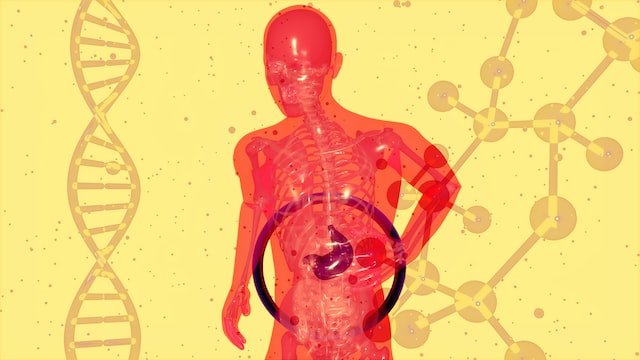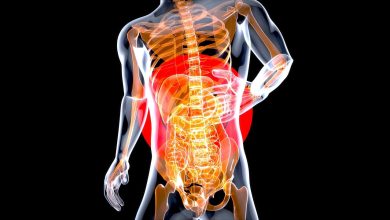Fatty Liver Disease: What You Need to Know & How to Prevent It

Aside from the skin, the liver is the largest organ in the body that is vital to many key functions. These include digestion of food, filtering the blood to remove toxins, processing proteins and breaking down nutrients. An unhealthy liver is linked to many difficulties and illnesses, including obesity, insulin resistance, diabetes, sleep apnea and heart disease.
Due to the consequences of liver disease, it is vital to know and understand the state and functioning of your liver. Luckily, companies such as Fibronostics can give you a full liver evaluation that will tell you if you have liver disease and need treatment. You can find out more about Fibronostics and what they have to offer at fibronostics.com.
Before going for a liver evaluation, knowing about liver disease and what it entails is important. This article will give you a brief outline of everything you need to know about fatty liver disease.

Copyright: Julien Tromeur on Unsplash l Licence: CC0 Public Domain
What is Fatty Liver Disease?
Fatty liver disease is known as steatosis. It is a type of liver condition that occurs when there is an excess of fat in your liver. A normal healthy liver contains very little amount of fat. However, when fat is around 5-10% of the liver’s weight, many adverse effects can occur.
Fatty liver disease is not a serious liver disease as it will not lead to drastic side effects or prevent your liver from functioning altogether. Additionally, it is very rare for a person to display signs and symptoms of this disease. However, over time, the disease can progress and lead to conditions such as liver failure, liver cancer, cirrhosis and fibrosis. Luckily, fatty liver disease is easily treatable.
Types of Fatty Liver Disease
There are two types of fatty liver disease:
-
Alcoholic Fatty Liver Disease (ARLD):
ARLD happens when the liver is damaged due to drinking too much alcohol. The liver has the ability to create new cells and repair itself. However, drinking too much alcohol will disrupt this ability. As a result, the liver can become inflamed and swollen, leading to permanent scarring known as cirrhosis (the final stage of liver disease). This disease has three stages: alcoholic fatty liver disease, acute alcoholic hepatitis and alcoholic cirrhosis. If left untreated, ARLD can result in liver failure.
-
Non-Alcoholic Fatty Liver Disease (NAFLD):
NAFLD is a liver disease that occurs in people who drink very little or no alcohol. This liver disease is caused by a build-up of fat in the liver. The main causes and risk factors of NAFLD are obesity, insulin resistance, hyperglycemia and high cholesterol. Initially, this liver disease does not have any serious consequences. However, over time, it can result in liver failure as the liver becomes inflamed, swollen and scarred. NAFLD has four main stages, including:
- Simple fatty liver (steatosis) – when there is a build-up of fat
- Non-alcoholic steatohepatitis (NASH) – when the liver becomes inflamed and swollen
- Fibrosis – when the liver tissue and blood vessels start to scar
- Cirrhosis – permanent scarring and damage to the liver
Symptoms of Fatty Liver Disease
In the early stages of liver disease, symptoms are uncommon. However, some of the symptoms that you might experience include:
- Swelling of the legs and ankles
- Itchy skin
- Dark urine or a pale-colored stool
- Fatigue and weakness
- Nausea
- Loss of appetite
- Abdominal pain and swelling
- Yellowish eyes and skin
Methods to Prevent and Treat Fatty Liver Disease
Regardless of your type of liver disease, the main way to prevent and treat it is by changing your lifestyle. This can be done in two ways:
-
Eating Healthier Foods
The type of foods that you eat has a direct effect on your liver health. To reduce the risk and/or progression of liver disease, you should follow a balanced diet. This will include eating fruits, vegetables and food rich in antioxidants (spinach, pepper, paprika, etc.). In addition, you should avoid fried, processed foods and foods high in sugar and salt.
2. Exercising Regularly
Physical activity and exercise have been associated with numerous health benefits. In fact, studies have shown that regular exercise can assist in managing fatty liver disease. There are many types of exercises that you can use in your regimes, such as walking, cycling, weight training and boxing.

Copyright: Luis Vidal on Unsplash l Licence: CC0 Public Domain
Everything You Need to Know About Fatty Liver Disease
Fatty liver disease is a type of liver condition that can affect anyone irrespective of age. The liver plays a key role in living a healthy and happy life. As such, ensuring that your liver is healthy and fully functional is key. In this article, we have highlighted key facts about fatty liver disease. If you believe that you are at risk of liver disease, it is best to make a change as soon as possible.




